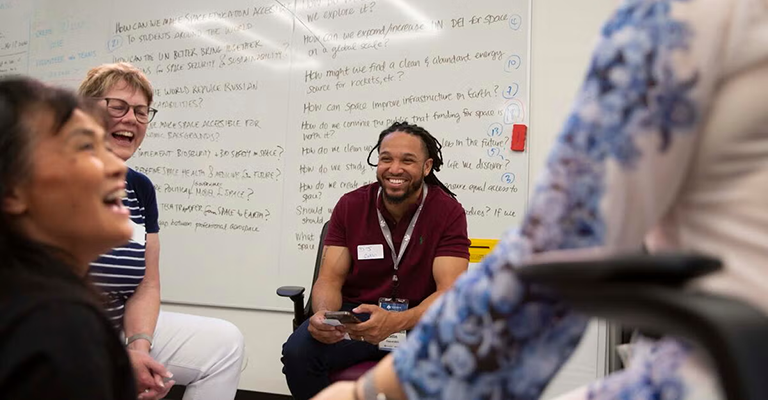About
How do we build a scalable interactive model of an off-world community?
In the coming decades, humanity will establish footholds in lunar orbit, on the surface of Mars and, eventually, on the moons of Jupiter and Saturn. Achieving this requires mastering how to sustain life in hostile environments with limited resupply. What blend of mechanical and biological systems will be essential to support human life in expanding off-world habitats?
SIMOC is a novel integration of an agent-based software model, data from real-world plant physiology studies at NASA and closed ecosystem studies at universities worldwide. It is a platform for research and citizen science, providing a robust Python server and web-based, educational interface. The objective was to find the minimum complexity required to sustain human life through a combination of physico-chemical (machine) and bioregenerative (plant) systems for long duration, off-world missions. Explore the SIMOC website.
Status
Past
Category
Technology development and demonstration | Learning and education
Environment
Earth | Moon and Mars
Contact

Key accomplishments
- SIMOC is now live at the National Geographic Education Resource Library, expanding access to educational resources.
- Transitioned from prototype to a scalable platform for global citizen scientist engagement.
- The SIMOC website features online tutorials designed to guide first-time users.
- A NASA veteran has developed NGSS-aligned guides for grades 5-8 and 9-14, available for free on the SIMOC website.
- Conducted plant biology experiments at the University of Arizona’s Biosphere 2, enhancing 30 years of NASA data and creating a physical Mars habitat analog.
- Secured initial funding for constructing the world’s highest fidelity Mars habitat analog, supported by UA, Paragon, NASA and National Geographic.
- Currently in its fifth development stage, with plans for real-time data display from environmental sensors in collaboration with an ASU computer science capstone team.
- Funded by the National Geographic Society since 2020, with continued support into 2024.
- Now in Phase VII development, integrating four members from the 2021-2022 ASU computer science capstone team into permanent staff roles.
- Improved accuracy in simulations, including staggered crop rotation and resource monitoring within the habitat.
- Provides accurate simulations of the original and second sealed missions at Biosphere 2, focusing on critical chemical and biophysical functions.
- Completed SIMOC Live for capturing real-time data during crewed missions, monitoring CO2, O2, humidity, temperature and pressure.
- The SIMOC Agent Based Model is now open source, allowing global developers to contribute and enabling schools to download a local version for classroom use.
Publications
News

Interplanetary Initiative’s pilot project program creates runway for real-world impact
November 27, 2023 | Shireen Dooling
Our model for project creation is yielding results on a range of pilots, from AI teaming to sustaining life in space.
Team
Explore more projects
Learn about our research programs dedicated to creating a future in space that prioritizes people and environments. Collaborate with experts and students to explore groundbreaking ideas and solutions that drive positive change.